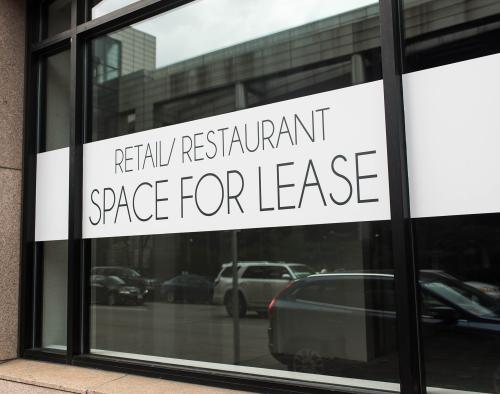“With D.C. Inertia, Urban Leaders Must Innovate” was originally published in the San Francisco Chronicle on September 13, 2013.
During San Francisco’s Gold Rush years, it could take more than three months for a message to reach the federal government in Washington, D.C. Local leaders essentially were left on their own to manage a city whose population grew from 1,000 to 25,000 from early 1848 to the end of 1849.
Today, 160 years later, San Francisco – and cities and metropolitan areas across the country – are once again on their own, though it’s a result of federal inaction rather than isolation.
While the national economy continues to suffer the lingering effects of the Great Recession – including a jobs deficit of nearly 10 million and a poor or near-poor population that has ballooned to more than 107 million – the federal government continues to bicker and delay, leaving local leaders to pick up the slack.
This transfer of responsibility is the result of not only cyclical partisan squabbling, but also a structural change in the fiscal reality of the federal budget. With a rapidly aging national population, federal spending on entitlement programs is projected to rise by $1.6 trillion annually by 2023, while spending on critical investments around education, infrastructure, housing and innovation remain stagnant.
The good news is that across the country, smart metropolitan leaders are stepping up to grow jobs and make their economies more prosperous.
Networks of philanthropic and business interests and elected and civic leaders are coming together to design, deliver and finance economy-shaping initiatives in the face of this federal retreat. In many ways, this comes as no surprise – metropolitan areas are the engines of the national economy.
The top 100 metros in the country sit on just one-eighth of our land mass, but house two-thirds of the nation’s population and generate three-quarters of our gross domestic product.
In California, 85 percent of the state lives in its 10 largest metropolitan areas, which produce 89 percent of the state’s economic output. Metro areas also concentrate the key levers of our national competitiveness – skilled workers and entrepreneurs, ports and airports, universities and advanced industries.
The United States is fundamentally a metropolitan nation – and increasingly one in which Washington will do less and metro areas will do more. This metropolitan revolution is already playing out across the country.
In Portland, Ore., for example, realizing that most future economic growth will occur outside our borders, local leaders aren’t waiting for the federal government to lead on trade policy. A network of elected, business and civic leaders united behind a single vision for greater Portland.
They developed a regional export plan that focused on promoting their expertise in building sustainable cities, strengthening their electronics manufacturing, and providing export support for small manufacturers. By opening new markets abroad in the rapidly urbanizing developing world, Portland aims to double its total exports, a feat the region already accomplished from 2003-10.
In New York City, in the aftermath of the Great Recession and the financial collapse, Mayor Michael Bloomberg and the city’s economic development agency realized the need to diversify the economy. A network of stakeholders from across industries agreed that the city needed more tech talent.
The resulting Applied Sciences NYC initiative will bring three world-class technology campuses into the city, generating an estimated $33 billion in potential long-term economic impact from a public investment of only $130 million.
Even in Detroit, where both federal and local government have long been absent, local stakeholders – public, private and philanthropic – are renewing the city from its core, bringing jobs, residents and business back to a burgeoning 4.3-square-mile innovation district.
In a recent milestone, this network raised more than $100 million to fund the vast majority of the construction of a streetcar line between the revitalized downtown and midtown neighborhoods – a move that then-U.S. Transportation Secretary Ray LaHood called “unprecedented.”
Metro areas can’t wait for the federal government to ride to the rescue. These types of game-changing initiatives will become increasingly common. Local governments will find themselves responsible for more and more of the factors that make their own places competitive. Together, their actions and intentions will constitute a national competitiveness agenda, but one that’s not concocted in and delivered by Washington.
San Francisco – and cities around the country – need to step up.
Identify the network of leaders who can champion innovative solutions for your community. Set a vision that draws on the strengths of your distinctive local economy. Then, design and deliver that key investment – that game-changer – that will ensure a prosperous and opportunity-filled future for your community.



Commentary
Op-edWith D.C. Inertia, Urban Leaders Must Innovate
September 18, 2013